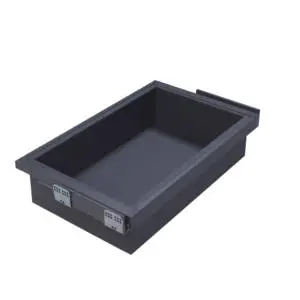Sheet Metal/5-Axis CNC Turning Precision Machining/Aluminum/Stainless Steel/Automobile/Punching Parts/Laser Cutting Welding/Stamping Manufacturing
Sheet Metal, 5-Axis CNC Turning Precision Machining: Aluminum, Stainless Steel, Automobile Punching Parts, Laser Cutting Welding, Stamping Manufacturing
In the automotive industry, where precision, durability, and performance are paramount, the integration of advanced manufacturing processes is key to producing high-quality components. From sheet metal fabrication to 5-axis CNC turning, and from working with aluminum and stainless steel to specialized processes like laser cutting, welding, and stamping, each technique plays a vital role in creating automobile punching parts and other critical components. This synergy of processes and materials ensures that automotive parts meet the stringent standards of safety, efficiency, and reliability.
Sheet Metal Fabrication for Automotive Components
Sheet metal fabrication is a cornerstone of automotive manufacturing, encompassing a range of processes to shape and form thin metal sheets into functional parts:
- Versatility in Forming: Sheet metal, available in various gauges, can be bent, rolled, or shaped into components like body panels, brackets, and enclosures. For automobiles, this versatility allows for the creation of both structural parts (such as door frames) and decorative elements (like trim pieces), all tailored to the vehicle’s design.
- Material Adaptability: Aluminum sheet metal is favored for its lightweight properties, contributing to fuel efficiency and reduced emissions. Stainless steel sheet metal, on the other hand, is used for parts requiring corrosion resistance, such as exhaust system components or undercarriage brackets.
- Cost-Effective Production: Sheet metal fabrication is well-suited for high-volume production, making it ideal for mass-produced automotive parts. Processes like stamping (a subset of sheet metal fabrication) enable the rapid creation of identical parts, ensuring consistency across vehicle models.
5-Axis CNC Turning: Precision Redefined
5-axis CNC turning is a advanced machining process that allows for the creation of complex, high-precision parts by rotating the workpiece on multiple axes simultaneously. This technology is a game-changer for automotive components requiring intricate geometries:
- Unmatched Precision: With 5-axis capability, manufacturers can machine complex contours, angles, and undercuts in a single setup, achieving tolerances as tight as ±0.001 mm. This is critical for automotive parts like fuel injectors, transmission shafts, and suspension components, where even minor deviations can affect performance.
- Efficiency in Complexity: Traditional machining may require multiple setups to produce a complex part, increasing the risk of errors. 5-axis CNC turning streamlines the process, reducing production time and ensuring consistency. For example, a single 5-axis operation can machine a curved suspension arm with precision-drilled holes, eliminating the need for multiple machines.
- Material Compatibility: Both aluminum and stainless steel are easily machinable with 5-axis CNC turning. Aluminum’s softness allows for faster cutting speeds, while stainless steel’s hardness is managed with specialized tooling, ensuring clean, precise finishes.
Aluminum and Stainless Steel: Ideal Materials for Automotive Parts
The choice between aluminum and stainless steel depends on the specific requirements of the automotive part, but both offer unique advantages:
- Aluminum: Its low density (about one-third that of steel) makes it perfect for reducing vehicle weight, improving fuel efficiency. Aluminum also has good corrosion resistance (especially when anodized) and is highly formable, making it suitable for parts like engine blocks, wheels, and body panels.
- Stainless Steel: Valued for its strength, durability, and corrosion resistance, stainless steel is used in parts exposed to harsh conditions. Examples include exhaust manifolds (resisting high temperatures and rust), brake components (withstanding friction and heat), and fasteners (ensuring long-term reliability).
Automobile Punching Parts: Stamping for Consistency
Punching, a subset of stamping, involves using a die to cut or shape metal sheets into specific forms. This process is widely used for producing high-volume automotive parts:
- Speed and Consistency: Punching machines can create holes, slots, or intricate shapes in sheet metal at high speeds, ensuring each part is identical. This is essential for automotive components like brackets, clips, and washer plates, which must fit together seamlessly during assembly.
- Material Efficiency: Punching minimizes material waste by precisely cutting shapes from sheet metal, reducing costs for large production runs. For example, a single sheet of steel can be punched into multiple identical clips, maximizing material usage.
- Integration with Other Processes: Punching is often combined with bending or welding to create more complex parts. A punched bracket, for instance, may be bent into a specific angle and then welded to another component to form a structural assembly.
Laser Cutting and Welding: Precision Joining and Shaping
Laser technology has revolutionized automotive manufacturing, offering precise cutting and welding capabilities:
- Laser Cutting: A high-energy laser beam cuts through sheet metal with exceptional accuracy, creating clean, burr-free edges. This is ideal for intricate parts like grille inserts, dashboard brackets, or custom-shaped body panels. Laser cutting works equally well with aluminum and stainless steel, ensuring versatility across materials.
- Laser Welding: This process uses a laser to melt and fuse metal components, creating strong, precise welds with minimal heat-affected zones. It is used for joining thin or delicate parts, such as aluminum body panels or stainless steel exhaust components, where traditional welding might cause warping. Laser welding also produces aesthetically pleasing welds, reducing the need for post-processing.
Stamping Manufacturing: Scaling Production
Stamping, a core process in automotive manufacturing, involves pressing sheet metal into dies to create predefined shapes. It is particularly valuable for:
- High-Volume Production: Stamping presses can produce thousands of parts per hour, making it ideal for mass-produced components like hoods, fenders, and door panels. The use of hardened steel dies ensures that each part meets exact specifications, maintaining consistency across production runs.
- Complex Shapes with Minimal Effort: Stamping can create parts with complex bends, embossments, or flanges in a single operation. For example, a car’s floor pan is often stamped from a single sheet of steel, incorporating multiple contours and reinforcements to enhance structural integrity.
- Cost Savings: Once dies are designed and fabricated, stamping is a low-cost per-unit process, making it economical for large-scale automotive production. This cost efficiency is passed on to manufacturers, reducing overall vehicle production costs.
Applications in the Automotive Industry
The combination of these processes and materials results in a wide range of automotive components:
- Structural Parts: Stamped steel or aluminum body panels, welded together using laser or MIG welding, form the vehicle’s frame, ensuring safety and rigidity.
- Engine and Powertrain Components: 5-axis CNC turned parts like crankshafts, camshafts, and fuel system components, machined from high-strength stainless steel or aluminum alloys, ensure efficient engine operation.
- Exhaust Systems: Stainless steel components, cut and welded with laser precision, resist corrosion and high temperatures, ensuring longevity.
- Interior and Exterior Trim: Laser-cut aluminum or stainless steel trim pieces, stamped into decorative shapes, enhance the vehicle’s aesthetic appeal.
Why Choose These Integrated Processes
- Precision and Reliability: From 5-axis CNC turning to laser cutting, each process ensures parts meet tight tolerances, reducing assembly issues and improving vehicle performance.
- Material Optimization: By selecting aluminum or stainless steel based on the part’s function, manufacturers balance weight, strength, and cost effectively.
- Scalability: Stamping and punching enable high-volume production, while 5-axis CNC turning handles low-volume, complex parts, ensuring flexibility across production needs.
- Innovation: Advanced processes like 5-axis machining and laser technology allow for the design of more efficient, aerodynamic, and lightweight automotive components, driving industry innovation.
In conclusion, the integration of sheet metal fabrication, 5-axis CNC turning, laser cutting, welding, stamping, and the use of aluminum and stainless steel is essential for producing high-quality automotive parts. These processes and materials work in harmony to meet the industry’s demands for precision, durability, and efficiency, ensuring that modern vehicles are safe, reliable, and performance-driven. Whether creating mass-produced punching parts or custom-machined components, this combination of technologies is at the forefront of automotive manufacturing.



